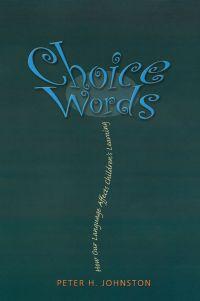
Choice Words Ch. 3 Identity
-
Chapter 3 Identity
“Building an identity means coming to see in ourselves the characteristics of particular categories (and roles) of people and developing a sense of what it feels like to be that sort of person and belong in a certain social spaces.” In other words: Putting yourself in another person’s shoes.
“What a talented young poet you are.”
You can substitute the word for anything you want. For me, I use “photographer.” When my children come to my room they are expected to put on their photographer hats, and act in a way that a photographer does. What are the qualities of a photographer? Being careful, respectful, and meticulous. Then, the children can have a standard to work towards. This “encourages the collective identity of a community of practice, that ‘people like us’ do things this way.”
“That’s not like you.”
This “invites the child to consider who he wishes to be – and whether he wishes to alter an assumed positive identity.” I have been using this phrase with children all the time. It lets the child think that the teacher has seen them act or do things in the appropriate way in the past and they are capable of acting that way again. It helps the child think about their own character and identity, therefore changing their behavior by their own choice.
“I wonder if, as a writer, you’re ready for this.”
Again, I substitute the word writer for photographer here. When the children ask me about doing things that I am not ready to teach them I do not say, “you can’t do this.” Instead, if you say “you’re not ready for this yet” it lets them know they are striving to develop into a place where they will be ready for it one day.
“I bet you’re proud of yourself.”
Saying “I’m proud of you,” makes the child feel he/she is working for the teacher. If you say it differently then they are working for themselves and their “internal feelings of pride builds upon the sense of agency and at the same time attaches an internal motivation to the activity.”
“What have you learned most recently as a reader?”
Instead of reader, I substitute the word photographer. Before we talked about how the students enter the room and put on their “photographer hats.” Since we are already photographers, we are inviting the student to think about what he/she as learned a photographer lately. This invites the student to review what they already know and build on previous knowledge.


